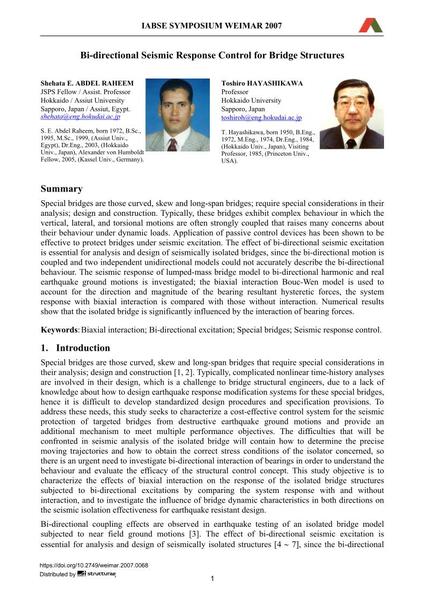Bi-directional Seismic Response Control for Bridge Structures

|
|
|||||||||||
Détails bibliographiques
| Auteur(s): |
Shehata E. Abdel Raheem
Toshiro Hayashikawa |
||||
|---|---|---|---|---|---|
| Médium: | papier de conférence | ||||
| Langue(s): | anglais | ||||
| Conférence: | IABSE Symposium: Improving Infrastructure Worldwide, Weimar, Germany, 19-21 September 2007 | ||||
| Publié dans: | IABSE Symposium Weimar 2007 | ||||
|
|||||
| Page(s): | 432-433 | ||||
| Nombre total de pages (du PDF): | 8 | ||||
| Année: | 2007 | ||||
| DOI: | 10.2749/weimar.2007.0068 | ||||
| Abstrait: |
Special bridges are those curved, skew and long-span bridges; require special considerations in their analysis; design and construction. Typically, these bridges exhibit complex behaviour in which the vertical, lateral, and torsional motions are often strongly coupled that raises many concerns about their behaviour under dynamic loads. Application of passive control devices has been shown to be effective to protect bridges under seismic excitation. The effect of bi-directional seismic excitation is essential for analysis and design of seismically isolated bridges, since the bi-directional motion is coupled and two independent unidirectional models could not accurately describe the bi-directional behaviour. The seismic response of lumped-mass bridge model to bi-directional harmonic and real earthquake ground motions is investigated; the biaxial interaction Bouc-Wen model is used to account for the direction and magnitude of the bearing resultant hysteretic forces, the system response with biaxial interaction is compared with those without interaction. Numerical results show that the isolated bridge is significantly influenced by the interaction of bearing forces. |
||||
